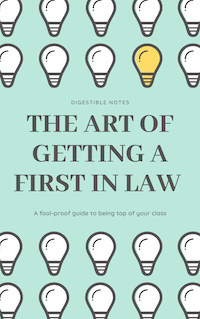Tracing Cases
Agip (Africa) v Jackson [1991] Ch. 547
Facts: Agip was an oil company. Agip’s accountant devised a scheme in which payee’s names were changed on invoices which enabled money to be put into a shell company and transferred offshore. Jackson had clearly assisted in the fraud by setting up the shell companies, transferring the money offshore and liquidating the company
Held: The Court of Appeal found that the money could not be traced at common law, as it had passed through mixed funds. However, the money was misappropriated in breach of a fiduciary duty, so equitable tracing was available
Barlow Clowes v Vaughan [1992] 4 All ER 22
Facts: An investment company went into liquidation leaving insufficient claims to satisfy all its investors.
Held: The rule in Clayton’s case was reaffirmed as the prima facie rule, but will not be applied it impracticable or would result in injustice
- Here Clayton’s rule was not used → it was clear the investors were investing in a common fund, so would have been impracticable to apply the Clayton rule
- The Cout of Appeal favoured, by a majority, a distribution to the investors pari passu rateably in proportions due to them (Woolf LJ also approved a ‘rolling charge’ approach)
Bishopsgate Investment Management v Homan [1995] Ch 211
Facts: Following Robert Maxwell’s death it transpired that money belonging to a pension trust fund under his control had been misapplied. The money had been paid into an account which then went overdrawn.
Held: It was held that it is impossible for the claimants to trace the money into an overdrawn bank account on the basis that the property they seek to trace has disappeared
Clayton’s Case; Devaynes v Noble [1814-23] All ER Rep 1
Facts: There was a partnership that, in breach of its fiduciary duty, sold treasury bills worth £1035 deposited by Clayton and kept the proceeds for its own use. However, Clayton continued to deal with bank and drew out sums greater than the amount converted by the bankers
Held: It was held that Clayton could have no claim against estate in respect of the £1,035, as that debt was set against the later drawings.
FC Jones & Sons v Jones [1997] Ch. 159
Facts: £11,700 was loaned to Mrs Jones by a partnership. She invested into potato futures using the money and made a large profit. She held a balance of £49,860 following the profits she made, which was stored in a separate single bank account. It later transpired the partnership had been bankrupt before it made the payment, so all partnership property was deemed to have retrospectively passed to the Official Receiver, including the £11,700 loaned to Mrs Jones. So the Official Receiver sought to trace the money, but the issue was whether the Official Receiver ought to be entitled to the entire £49,860 made from the initial £11,700.
⇒ Ordinary understanding of common law tracing would suggest Official Receiver could only recover the £11,700, and would only be able to get the further amounts under the equitable tracing principles
Held: However, the Court of Appeal held all of the £49,860 was to be paid to the Official Receiver as part of a common law tracing claim → this was a significant development in the scope of common law tracing
- Millet LJ was prepared to allow a proprietary, common law claim on the basis that the money in this case was perfectly identifiable in a single bank account
- On the facts, there could not have been a claim in equity against Mrs Jones because she had never been in a fiduciary relationship with the Official Receiver nor with the partnership (a necessary pre-requisite of an equitable tracing claim)
Foskett v McKeown [2001] 1 AC 102
Facts: A trustee misused trust funds to pay 2 of 5 premiums on a life assurance policy, of about £20,000. The money was later paid out under the policy
Held: It was held the beneficiaries of the trust could trace into the money paid out under the life assurance policy as it had not been mixed with the trustee’s own money. The House of Lords held they were entitled to a two-fifths share of the lump sum, worth about £400,000
The Art of Getting a First in Law - ONLY £4.99
FOOL-PROOF methods of obtaining top grades
SECRETS your professors won't tell you and your peers don't know
INSIDER TIPS and tricks so you can spend less time studying and land the perfect job
We work really hard to provide you with incredible law notes for free...
The proceeds of this eBook helps us to run the site and keep the service FREE!

In Re Diplock; Diplock v Wintle [1948] Ch. 465
Facts: This case arose from earlier case of Re Diplock: Chichester Diocesan Fund v Simpson [1944], where it was held bequests for ‘charitable or benevolent’ objects failed as a purpose trust, so resulted to the residuary beneficiaries. By the time this verdict was reached, some £250,000 had been distributed to 139 charities; thus, the second case was brought to determine whether, and how, the money could be recovered.
Held: Following Sinclair v Brougham the Court of Appeal held that equity operates not only on those that acquire property through their own breach of trust, but also in hands of people who are volunteers: equity can follow property into hands of people who do not know there has been a breach of trust (i.e. innocent volunteers) (Lord Green)
- So, the remedy is extended into the hands of innocent third parties
In Re Hallett's Estate; Knatchbull v Hallett (1879) 13 Ch.D. 696
Facts: A solicitor sold shares he held on trust and paid the proceeds into his own bank
Held: It was held, on the death of the solicitor, that the client was entitled to recover from the bank account – where a trustee has money in a personal bank account to which trust money is added, the trustee is acting honestly when paying money out of it
- Therefore, it is assumed that the trustee is paying out of her own money on investments which lose money and not the trust money → therefore it is said the trustee has rightfully dissipated her own moneys such that the trust money remains intact
In Re Oatway; Hertslet v Oatway [1903] 2 Ch. 356
Held: The doctrine of honest trustee recognises the basis of the trust in the conscience of the trust; therefore, not only is the court assuming trustee was acting honestly, but it is also applying the tenets of equity so as to require him to act honestly
- By the same token, it might be said that an investment in successful investments would be deemed to be an investment made out of the trust property
James Roscoe (Bolton) Ltd v Winder [1915] 1 Ch. 62
Facts: A trust fund was mixed with private money in a bank account. The owner of the account spent most of it reducing the total credit in the bank to about £25 at one point. Money was later paid in, resulting in a balance of £358 at his death.
Held: It was held that the seller could not claim more than £25 from the deceased's bank account (as that was the lowest intermediate balance)<
Papadimitriou v Crédit Agricole Bank [2015] UKPC 13
Facts: Mr Symes was the partner of Michailidis, whose parents had collection of art deco furniture. On Michailidis’s death, Symes sold the collection for $15m. $10m was deposited with the bank.
Held: It was held the art collector’s family were able to trace the property into the hands of the bank as the bank had notice of the claimant's proprietary interest and could not therefore claim the defence of being equity’s darling. The the Privy Council dismissed an appeal by bank.
Sinclair v Brougham [1914] A.C. 398
Facts: A building society took money from its members and leant it to other members to buy houses. They began lending ultra vires (i.e. outside their powers), making the loan contracts void for illegality.
Held: When the building society went into liquidation it was held the money could be traced in equity by the creditors (despositors)
Taylor v Plumer (1815) 3 M. & S. 562
Held: Lord Ellensborough was clear that there must be a clean substitute to trace at common law, such that the substituted can be ascertained to represent the original property
- So if you convert the property into money and mix that with other money you lose the power to trace at common law - this means that common law tracing is very rarely applied
- So an equitable claim of tracing is much more powerful than a common law claim of tracing
Law Application Masterclass - ONLY £9.99
Learn how to effortlessly land vacation schemes, training contracts, and pupillages by making your law applications awesome. This eBook is constructed by lawyers and recruiters from the world's leading law firms and barristers' chambers.
✅ 60+ page eBook
✅ Research Methods, Success Secrets, Tips, Tricks, and more!
✅ Help keep Digestible Notes FREE

